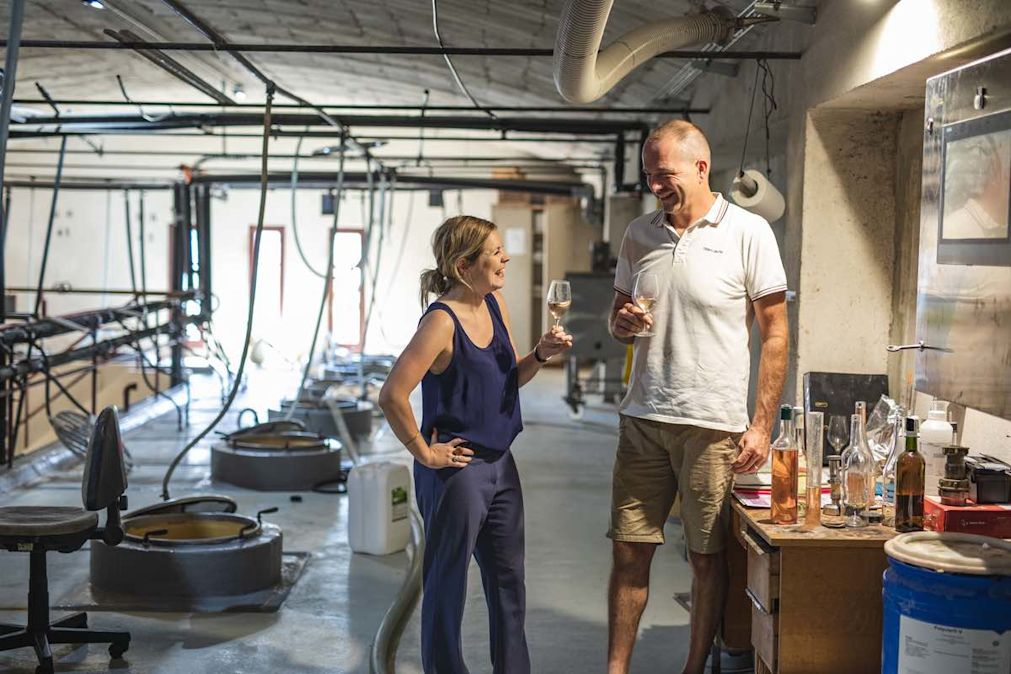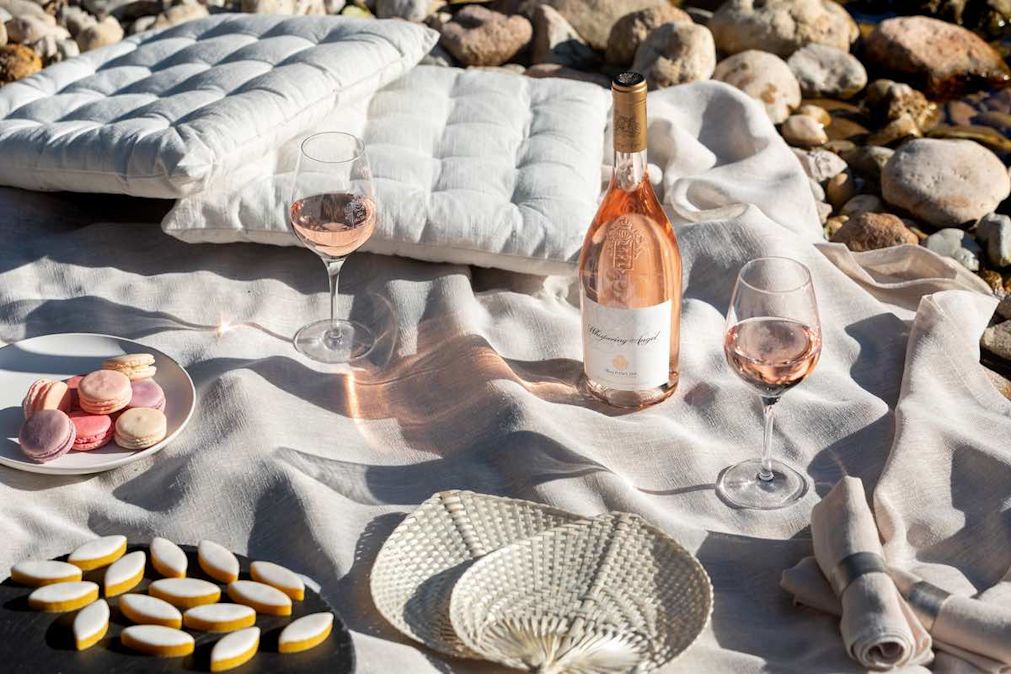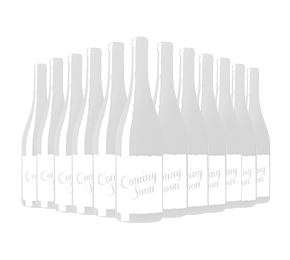Chat with Vinny
Rosé can be made three ways: brief skin contact, the saignée method, or by blending red and white wines. No one method is best – even top Champagnes use blending. What matters is the result: a perfectly pink, refreshingly delicious glass.
A happy accident
Back in the 2000s, we ran a limited offer on a delightfully fruity Aussie rosé called Flaming Galah – Aussie slang for ‘clumsy idiot’. A strange name, but appropriate.
You see, a cellar hand at one of our favourite wineries got mixed up when ‘pumping over’ (a process that deepens the colour of red wines) and accidentally added a few gallons of Shiraz to a vat of Sauvignon Blanc. After employing some colourful language, the winery owner realised not all was lost. As luck would have it, the wine had turned a rather pretty shade of pink. And he had the perfect name for it too.
But is all rosé wine made that way? Let’s take a look.

How rosé wine is made
There are basically three ways of making rosé wine, one of which has been described above. Here they are, in a nutshell:
Limiting skin contact: Most rosé wines are made by fermenting red grapes and separating the juice from the skins before they take on much colour. Examples include the elegant pale pinks of Provence and Bordeaux.
Saignée method: Similar to above, but a portion of juice is ‘bled off’ a tank of red wine early in the fermentation – producing a pale pink wine and increasing the depth of the remaining red wine.
Blending: Some rosé wines, like Flaming Galah, are made by blending red and white wines after fermentation. This might seem the easy option – but it is in fact a very skilled job to get just the right shade for your favourite pink fizz.
Which rosé wine method is best?
You might think that limiting contact with red grape skins is the better method. After all, it seems more complicated than simply blending red and white wines together.
But neither is inherently superior. In fact, most rosé Champagnes are made by blending red and white wines to carefully achieve the perfect shade. Even top Champagnes, like Bollinger Grande Année Rosé (circa £150 a bottle), are made this way.
On the other hand, Provence rosé – the gold standard for the pale, elegant pinks that have become a must-have at stylish summer gatherings – is made by limiting skin contact. Wines such as Whispering Angel show that this method can produce elegant, nuanced rosés at the very top level.

Want to know more?
If you’d like to know more about winemaking, check out our blog How wine is made. For more on the different styles of rosé, take a look at our Beginner’s guide to rosé.
About the author
Chris Larkin
A seasoned copywriter with over two decades experience, Chris has been part of the team since 2021. At Laithwaites HQ, you’ll find him either working on our latest catalogue or creating informative content for our website. Qualified to WSET Level 3 Wine, Chris is as geeky about wine as he is about copywriting. But when it comes to choosing a special bottle, he is a traditionalist, and loves a good Bordeaux or Mâcon Chardonnay.

